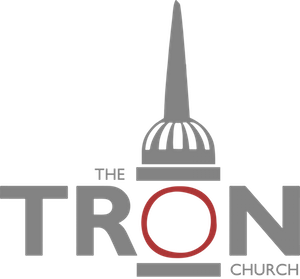"1 Now even the first covenant had regulations for worship and an earthly place of holiness. 2 For a tent was prepared, the first section, in which were the lampstand and the table and the bread of the Presence. It is called the Holy Place. 3 Behind the second curtain was a second section called the Most Holy Place, 4 having the golden altar of incense and the ark of the covenant covered on all sides with gold, in which was a golden urn holding the manna, and Aaron's staff that budded, and the tablets of the covenant. 5 Above it were the cherubim of glory overshadowing the mercy seat. Of these things we cannot now speak in detail.
6 These preparations having thus been made, the priests go regularly into the first section, performing their ritual duties, 7 but into the second only the high priest goes, and he but once a year, and not without taking blood, which he offers for himself and for the unintentional sins of the people. 8 By this the Holy Spirit indicates that the way into the holy places is not yet opened as long as the first section is still standing 9 (which is symbolic for the present age). According to this arrangement, gifts and sacrifices are offered that cannot perfect the conscience of the worshiper, 10 but deal only with food and drink and various washings, regulations for the body imposed until the time of reformation."
Hebrews 9:1-10
What then is the language that these symbols speak? In the outer court the altar of burnt offering spoke of the reality that no kind of approach could ever be made to God apart from sacrifice; guilt must first be put away. Next, the laver spoke of the necessity for cleansing from the defilement of sin. The shewbread in the holy place spoke of Christ the bread of life and of the power of God to supply His children's daily needs; the candlestick spoke of Christ the light of the world and of God's power to lead men out of darkness into the light of life. The altar of incense was not one on which sacrifice for sin was made, but rather it was the sweet-smelling 'sacrifice' of incense that was made there, and spoke typically of the offering believers made of themselves to God in devotion and consecration. As to the holiest of all, in the old economy the high priest entered in once a year, not without blood, to make atonement for the sins of the people. Apart from this solitary entry no one was allowed into the inner sanctum - and, as is said here in 8, the Holy Spirit signified that the way into the holiest - into God's presence - was not yet made manifest. Now the point in chapter 9 is that with the coming of Christ the veil separating the holiest of all from the rest and barring man's entrance into the presence of God was taken away and the way made open and accessible to all. We may see how beautifully illustrative of New Testament truths the Tabernacle is when we place the epistle to the Romans alongside it. Paul's teaching on justification in chapter 3 corresponds to the altar of burnt offering; his teaching on union with Christ in chapter 6 to the laver which cleanses the defilement of sin; the provision of the Spirit in chapter 8 to shewbread and candlestick; and the great call to consecration in chapter 12 to the altar of incense where the living sacrifice is made. How wonderful!
